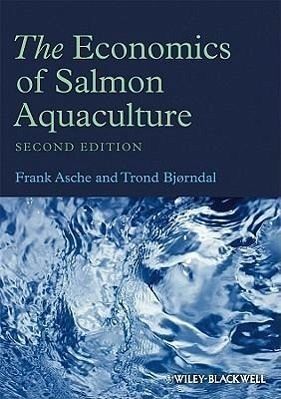
The Economics of Salmon Aquaculture
Versandkostenfrei!
Versandfertig in über 4 Wochen
173,99 €
inkl. MwSt.
Weitere Ausgaben:

PAYBACK Punkte
87 °P sammeln!
First published in 1990, The Economics of Salmon Aquaculture was the first book to systematically analyse the salmon aquaculture industry, from both a market and production perspective. Since publication of the first edition of this book, the salmon aquaculture industry has grown at a phenomenal rate, with salmon now being consumed in more than 100 countries worldwide. This second edition of a very popular and successful book brings the reader right up to date with all the major current issues pertaining to salmon aquaculture. Commencing with an overview of the production process in aquacultur...
First published in 1990, The Economics of Salmon Aquaculture was the first book to systematically analyse the salmon aquaculture industry, from both a market and production perspective. Since publication of the first edition of this book, the salmon aquaculture industry has grown at a phenomenal rate, with salmon now being consumed in more than 100 countries worldwide. This second edition of a very popular and successful book brings the reader right up to date with all the major current issues pertaining to salmon aquaculture. Commencing with an overview of the production process in aquaculture, the following chapters provide in-depth coverage of the sources of the world's supply of salmon, the growth in productivity, technological changes, environmental issues, markets, market structure and competitiveness, lessons that can be learnt from the culture of other species, optimal harvesting techniques, production planning, and investment in salmon farms. Written by Frank Ashe and Trond Bjorndal, two of the world's leading experts in the economics of aquaculture, this second edition of The Economics of Salmon Aquaculture provides the salmon aquaculture industry with an essential reference work, including a wealth of commercially important information. This book is also a valuable resource for upper level students and professionals in aquaculture and economics, and libraries in all universities and research establishments where these subjects are studied and taught should have copies of this important book on their shelves.


